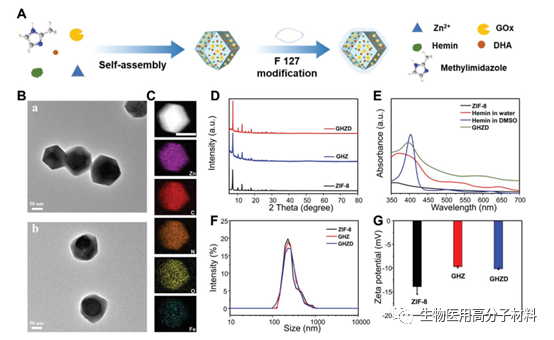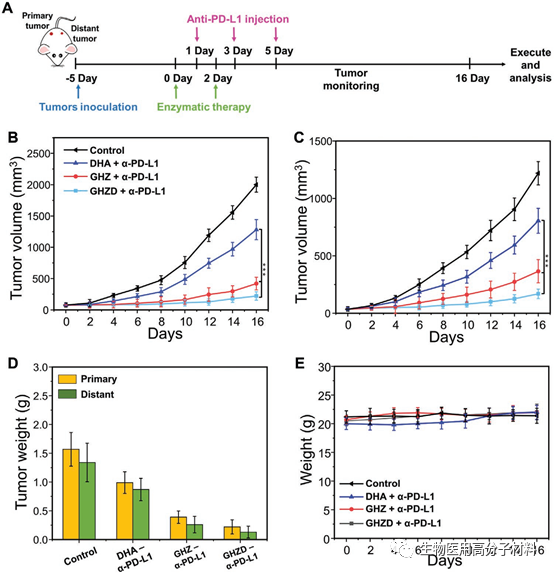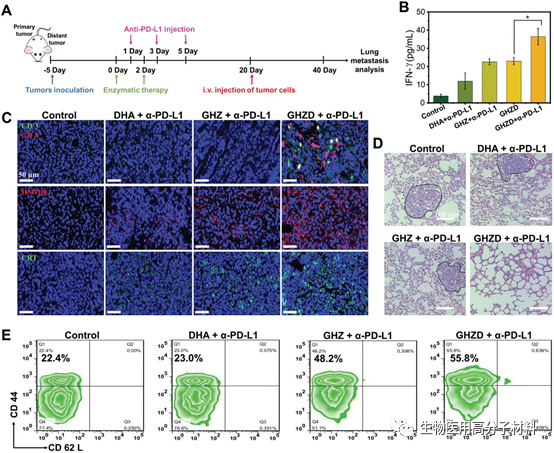
hotline:
17715390137
Tel/Wechat:
18101240246 (Technology)
0512-68565571
Email:mxenes@163.com (Sales Engineer)bkxc.bonnie@gmail.com
Scan the code to follow or search the official account on WeChat:
2D Materials Fronrier After paying attention,
click on the lower right corner to contact us,
Enter enterprise WeChat.
Professional Services Online


Biocatalytic nanomaterials have been proven to regulate the immunosuppressive state that is ubiquitous in the tumor microenvironment and directly induce anti-tumor immune responses, effectively overcoming the obstacle of immunosuppression in tumor immunotherapy. Researcher Lin Juns research group from Changchun Institute of Applied Chemistry, Chinese Academy of Sciences, wrapped glucose oxidase, synthetic nanoenzyme-hematin, and dihydroartemisinin derived from sesquiterpene lactone endoperoxide in zeolite imidazole salt. In the metal framework (ZIF-8), a biomimetic enzyme cascade-induced toxic drug release substance (GHZD) is synthesized to enhance biocatalytic immunotherapy. GHZD has a good performance of multi-enzyme mimics (glucose oxidase, peroxidase, glutathione peroxidase) cascade catalyzed reaction in artificially synthesized nanometer size; at the same time, this glutathione The responsive iron current amplifier can generate a large amount of carbon free radicals in situ, giving GHZD nanoparticles tumor specificity and the ability to generate carbon free radicals from circulation. Irreversible free radicals and continuous production of H2O2 can orderly and selectively stimulate tumor oxidative stress, and further effectively induce immunogenic death. Finally, in situ nanoenzyme immunotherapy is used for tumor suppression, which successfully stimulates The immune memory effect effectively prevents the growth and metastasis of distant tumors.
Figure 1. Synthesis process and characterization of GZHD.

Figure 2. The enzymatic properties of biomimetic nanozymes and the generation of glutathione-responsive carbon radicals.

Figure 3. Induction and cytotoxicity of ICD in cells.

Figure 4. Biocatalysis triggered in vivo enhances immunotherapy.

Figure 5. In vivo immune performance of GHZD and ICB synergistic treatment.

Figure 6. In vivo treatment and anti-metastatic studies.
Paper link:
https://onlinelibrary.wiley.com/doi/10.1002/adma.202006363
Information source: biomedical polymer materials
This information is from the Internet for academic exchanges. If there is any infringement, please contact us and delete it immediately

| Reminder: Beijing Beike New Material Technology Co., Ltd. supplies products only for scientific research, not for humans |
| All rights reserved © 2019 beijing beike new material Technology Co., Ltd 京ICP备16054715-2号 |